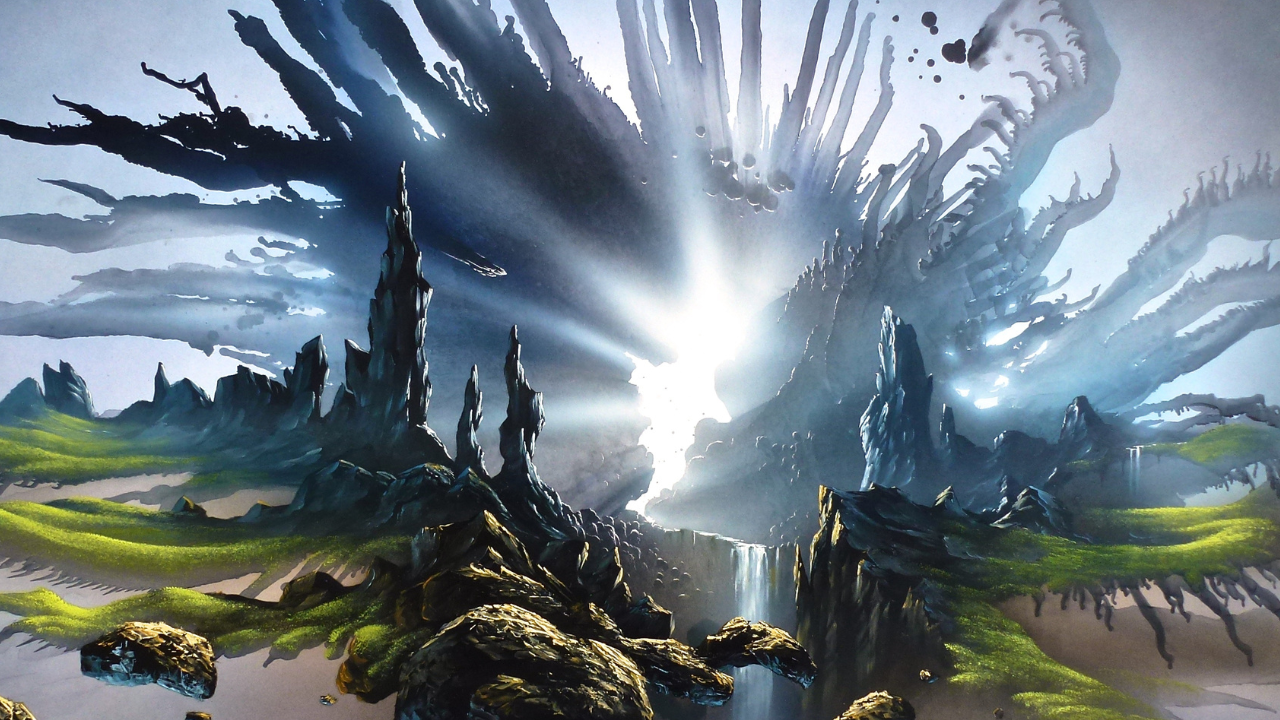The Ultimate Guide to World-Building

Post written by Andrew Wall.
When we get down to it, what even is world-building? I mean, at its heart, at its most essential, what is it? Even if we think we know what it is, how do we do it well? There are so many contradictory opinions and approaches, so many definitions floating around out there, how do we cut through all the noise?
In this article, let's try to get to the heart of it: I will break down the basics of what world-building is and how to do it well.
What is World-Building?
Most people make one really big assumption: that world-building is all about setting. The problem with this assumption is that it discards a lot of the potential that world-building can contribute to your story.
World-building is so much more than putting together your story’s setting! Your setting is only a piece of the pie, while your world is the whole pie. Your setting is bound by time and location, while your world is not.
So what is world-building? Creating a fully-functioning world with:
- diverse cultures and societies,
- diverse biomes and locations, and
- a rich timeline of major events.
The ultimate goal is to walk away from your world-building process with a world full of relationships and interconnections, of real-feeling cause and effect, and too much story potential to actually utilize in a single book (or even in a series!).
How Best to Approach World-Building
Something most people lack is a systematic approach to world-building that is designed to make the process straightforward and easier to tackle. Most people start wherever they feel they have the best ideas (usually an idea for a kingdom or a place of some sort) and then they bounce around their world filling in things as needed.
While this approach is not technically wrong, if we truly hold that world-building is more than setting work, then it needs to be approached with a little bit more intentionality than that.
Our 5-Phase Framework is builds this intentionality into an approach to world-building. So what are the phases in our framework?
- Phase 1: Laying the Foundation: setting basic world rules, establishing geography, and identifying many of the basic components in your world—from resources to sentient species.
- Phase 2: Location, Location, Location: identifying different types of important locations in your world.
- Phase 3: Crafting Context: timelines and socio-political mapping.
- Phase 4: Economics, Politics, and Power: establishing relationships and power dynamics within your kingdoms (or political states).
- Phase 5: Creating Culture: crafting arts, religion, and other cultural bits.
We came up with this approach to help streamline world-building into a process that has a sort of "snowball" effect of one phase taking what the last phase created and moving to the next level of detail with it.
Another Important Consideration
No matter how you choose to approach world-building (in terms of what process you use), a big concern many writers have is around the uniqueness of the world you are creating.
The threefold secret to creating a world that shines is ensuring that your world:
- Has integrity to stand on its own without contradicting itself.
- Has sufficient complexity in the relationships between your world and those who inhabit it, and
- Is dynamic in how consequences for decisions and events play out within it.
Simple, right? (Ha.)
Tip: To be certain your world has integrity, complexity, and dynamism, you need to really think through that bit on relationships.
For example, how does Kingdom A’s decision to go to war affect the environment? How does it affect its own citizens? Kingdom B’s citizens? The economy of the wandering tribes that have nothing to do with the conflict? Even after the war, what are the lasting effects on society, culture, and the world economy?
Conclusion
It is easy to want to jump ahead to plotting or drafting, but world-building is how we really get to know our world and how these ripple effects travel through it. If we want our world to be unique, we need to take the time to learn about it as if it was real and alive.
Want to learn more about our 5-Phase Framework? Check out our course World-Building Made Simple.
P.S. If you're stuck with an aspect of world-building and want some individualized help, check out my world-building coaching packages here.
Stay connected with news and updates!
Sign up to receive our newsletter, special coupons for our products, and announcements about our growing selection of tools for authors!
We hate SPAM. We will never sell your information, for any reason.




